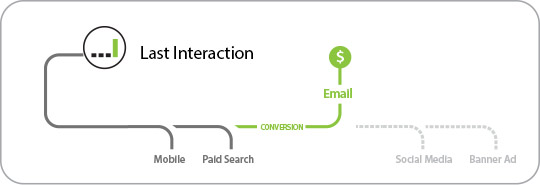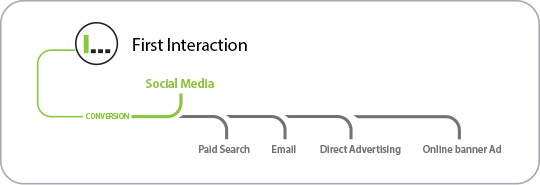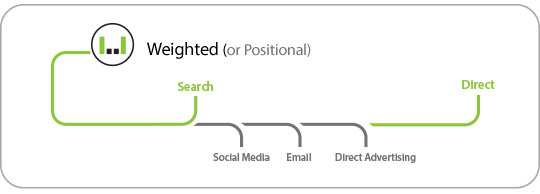Table of Contents
Determining which sources of traffic lead to conversions is a vital part of a successful marketing campaign. Most analytics platforms report conversions based on the last source of traffic by default. However, customers can sometimes experience multiple touchpoints from several marketing campaigns before they convert. In those cases, it’s imperative as a marketer to know the differences between the available attribution models and when to use each.
A quick example
Visitor X clicked on one of your paid search ads, opened and clicked one of your promotional emails, then clicked one of your display ads, and finally converted into a lead on your site. In this scenario, the simple idea of crediting a channel with a conversion can get complicated. Is it the paid search channel, email, display, or all three that get credit?
Attribution models are the sets of rules used to determine which traffic source should be credited with which conversions. The most commonly used model is “last interaction,” which credits the last interaction with the conversion regardless of any previous campaigns or channels with which the visitor may have interacted.
What Do Attribution Models Mean for Me?
Using the right attribution model for your advertising and business goals is key to understanding the channels that deliver value and those that underperform. Even though using an appropriate attribution model can give you detailed insight into cross-channel performance, it is always necessary to test assumptions.
A thorough understanding of attribution models and how they play a part in performance marketing is the most important part of a successful marketing campaign.
As with any form of modeling, there are pros and cons to each approach. You may find that one or two models fit most of your marketing efforts very well. Even in those cases, it’s important to compare the performance with other models to ensure value-driving campaigns aren’t inadvertently turned off.
Last Interaction
The conversion is credited to the last channel the customer interacted with — any other channels that may have contributed to the conversion are not considered.

When to use it:
If your business is based on attracting customers at the point of purchase and there is typically no consideration period.
First Interaction
The conversion is credited to the channel the visitor first interacted with — any other channels that may have assisted in the conversion after the first click are not considered or given any credit.

When to use it:
Use this method if your advertising campaigns are primarily focused on attracting attention to your brand (aka brand building). This model is not generally recommended for action-based marketing campaigns.
Last Non-Direct Click
Conversion is credited to the last channel the customer interacted with, which was not Direct traffic (e.g. bookmark or direct type-in traffic sources).

When to use it:
Use if your advertising campaigns are focused on attracted customers near the point of purchase and you consider direct traffic customers to have already been “won” by the previous ad campaigns.
Things to be aware of:
Some traffic sources may inadvertently be reported as “direct” by analytics programs. One example of this are email campaigns that lack properly tagged tracking URLs. Another common example is traffic being referred from SSL (HTTPS) pages sometimes being reported as direct.
Linear (or equal share)
All traffic channels involved in the conversion are equally weighed.

When to use it:
Use this model if your advertising campaigns are designed to provide multiple touchpoints in a longer sales process and each touchpoint is equally important.
Time Decay (or most recent)
This model credits the most recent channel interactions more heavily than older channels in an exponential decay manner. If a five-day decay is used, interactions from 5 days are given 50% of the value a same-day conversion interaction is given. An interaction from 10 days ago would receive 25% the credit of a same day conversion interaction.

When to use it:
Use this model if you customer average consideration phase is fairly short and builds intensity with later interactions. This method can be commonly used with short promotions where a conversion is most heavily credited to the most recent interaction, but the other interactions still receive some credit.
Weighted (or positional)
The first and last interaction receive a large share of the credit and intermediate interactions receive some credit. This model is a blend of the first interaction and last interaction models.

When to use it:
Use this model if you equally value the interactions which created awareness and finalized conversions and are mostly concerned with only those two interactions.
Custom
You may find the common models don’t fit your promotion methods or touchpoints very well. In that case, it may be best to create a custom model that assigns weights to the channels you most value.

A custom model may also be useful as a comparison to another model you rely on for channel awareness.
Get Started!
Regardless of which model you choose to analyze your channel contributions to conversions, it is always a good idea to compare it to other models. Comparisons can help identify channels that may be performing unexpectedly or to identify areas of improvement in your marketing efforts.